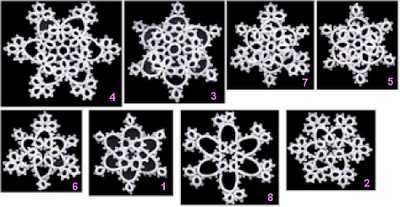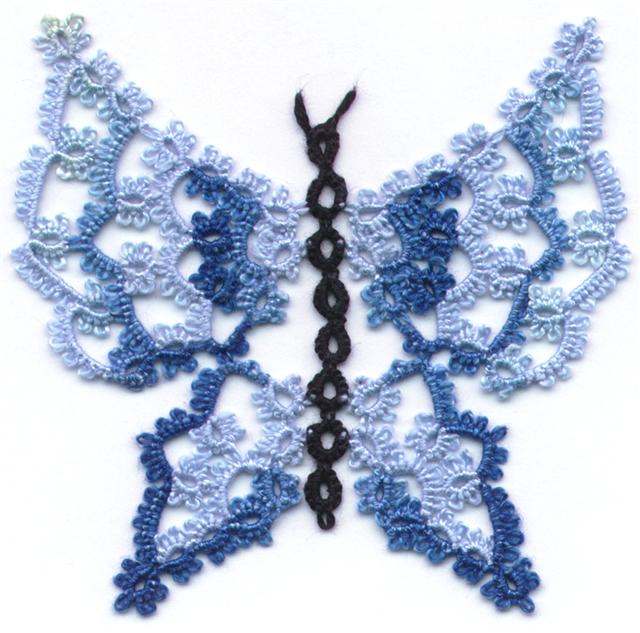Several years ago I needed to create a doily in a hurry. My inspiration was nothing more than I just needed a quick gift. Having crocheted a lot of granny squares, knew that 7 joined hexagons would make a doily and I had 8 different hexagon shapes to choose from. The largest of the 8 designs was Snowflake 4, so it was my obvious choice. I tatted the 7 motives and joined ten together by their points.
That made a nice little grouping, but the motives were very pointy and they didn't have a nice smooth outer edge so the doily looked unfinished. If you have ever tatted a doily, you know that the further from the centre you get the longer it takes to tat a round and I didn't have a lot of time.
 The simplest method of bringing it all together was just to tat a row of chain around the circumference of the motives. At the point where 3 motives were joined there were 3 cloverleaves. On the outer edge that meant that there were only 2 cloverleaves, so for continuity I tatted a cloverleaf of matching proportions at that point. Where there was just one cloverleaf, I tatted a single ring and joined them together by a chain.
The simplest method of bringing it all together was just to tat a row of chain around the circumference of the motives. At the point where 3 motives were joined there were 3 cloverleaves. On the outer edge that meant that there were only 2 cloverleaves, so for continuity I tatted a cloverleaf of matching proportions at that point. Where there was just one cloverleaf, I tatted a single ring and joined them together by a chain.The chains of the first row were deliberately made long both to save time and to separate the edging from the motives. The less connected it was, the less I had to figure out as far as matching the motif design. I could have worked the edging around each ring of the cloverleaf and followed the outer contour of the motives but it would have taken a lot more tatting and a lot more thinking. As it was, the negative space added a design element and made it easier to work the edging.
The single row had no depth or substance to it. It was just a big floppy chain. Adding the second row with more connecting points made it more solid and gave it shape. When you add an edging to something you want to repeat part of the theme to make it match and look like it belongs. The sparse 2 rows of edging added to the motives is kind of skimpy because I was short of time and had to make this in less than a week, but it still works.






